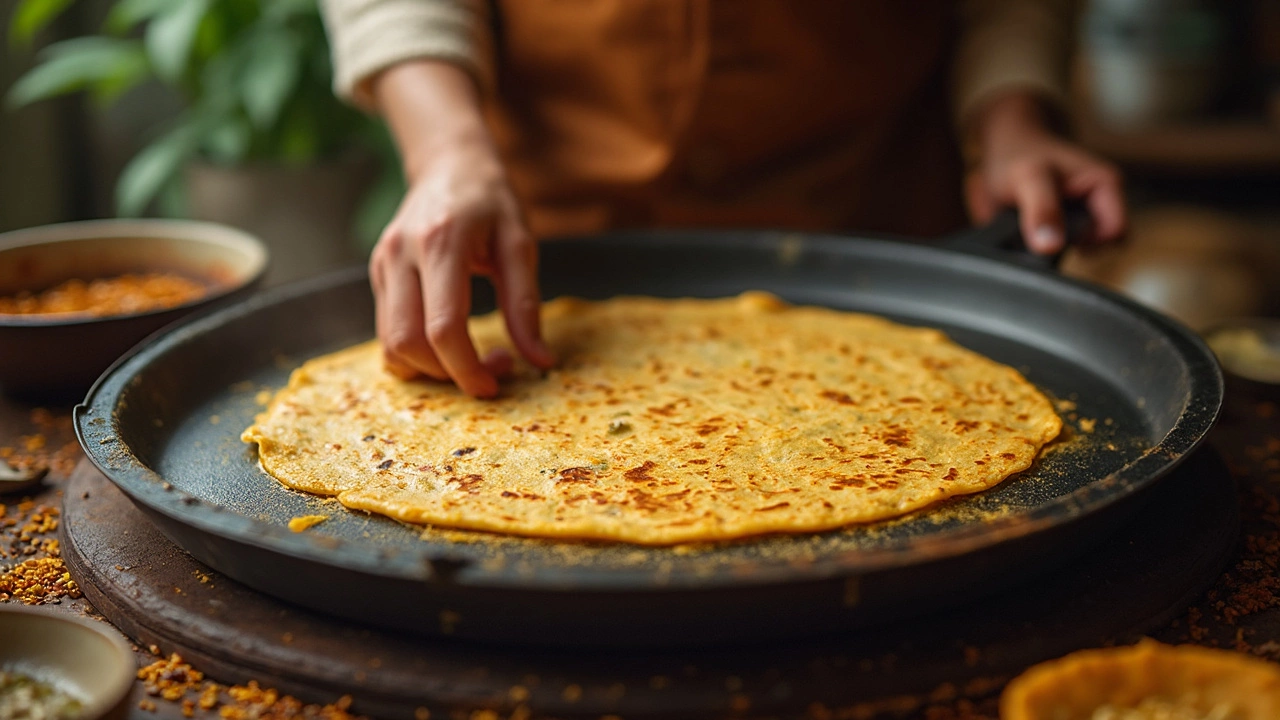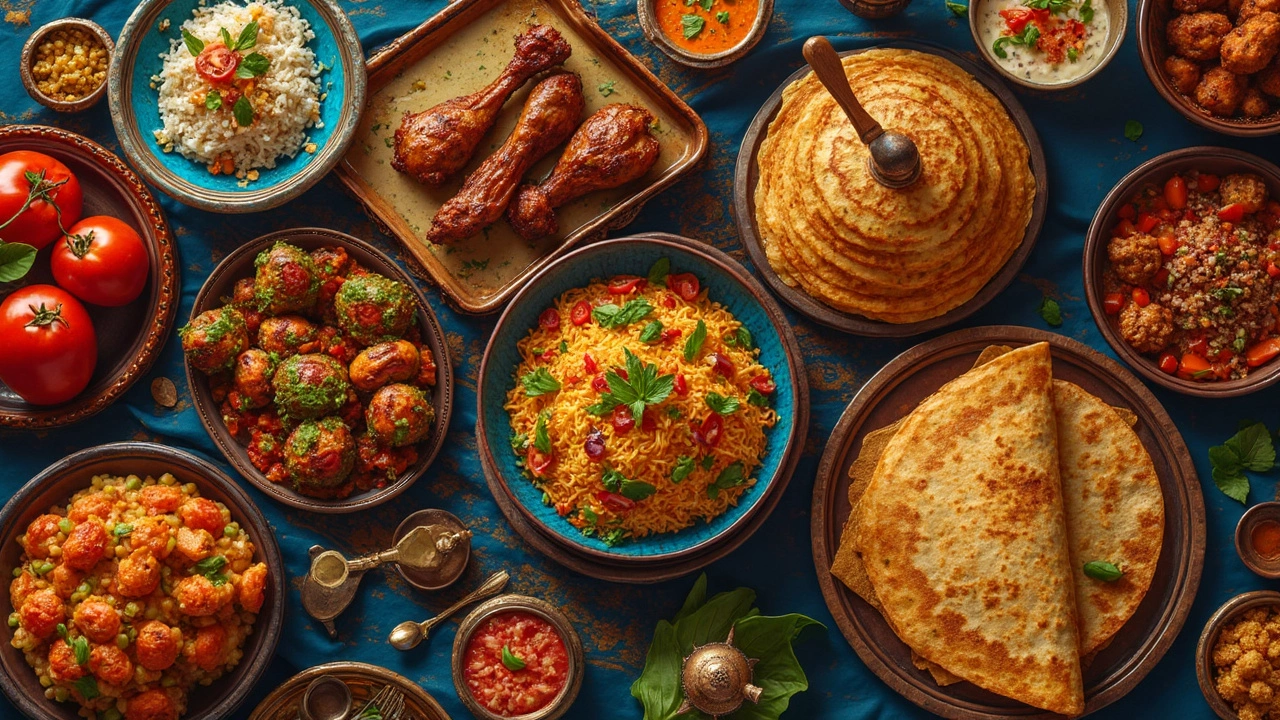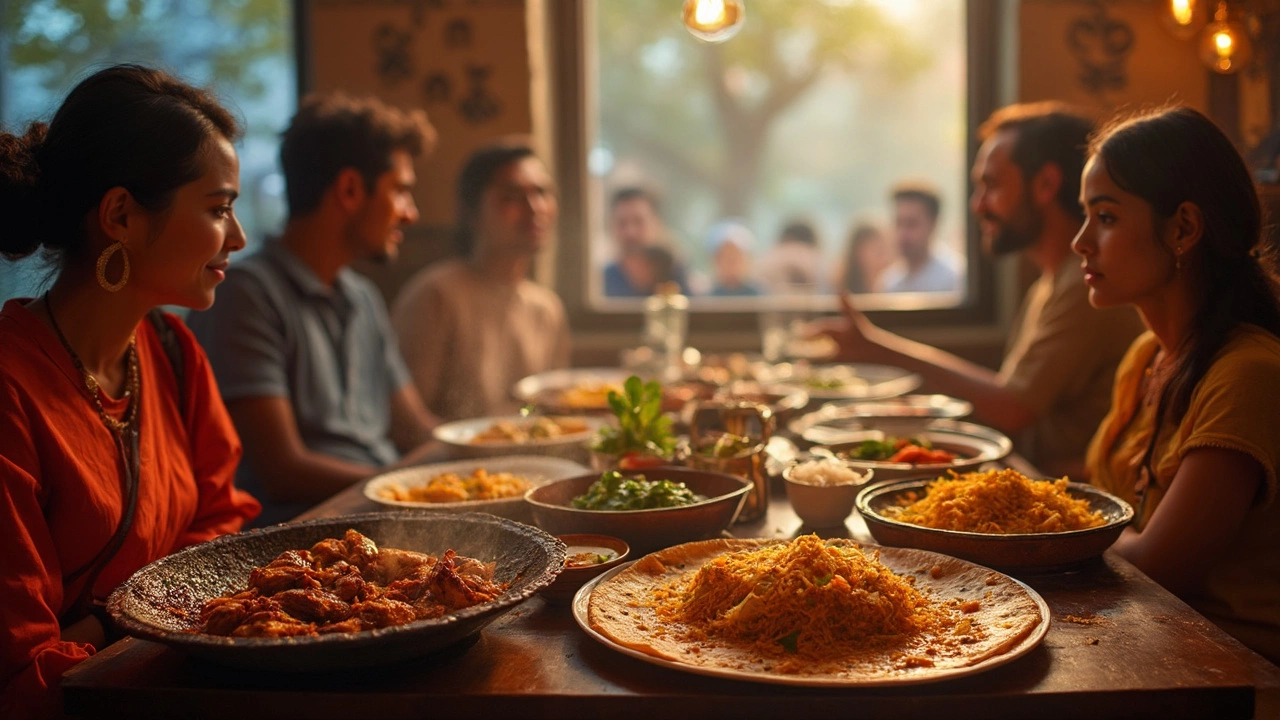If you're stepping inside an Indian restaurant and the thought of curry makes you hesitate, you're in for a pleasant surprise! Indian cuisine is rich with diverse flavors that go far beyond the well-known curry realm. Let's talk about some mouth-watering options you might want to try instead.
First off, there's the world of tandoori dishes. Think of a hot clay oven infusing rich, smoky flavors into meats and vegetables. Tandoori chicken is the star here—marinated in yogurt and aromatic spices. It's mildly spiced, yet bursting with zest. This might be your new favorite if you're not into curry sauces.
And don’t get me started on Indian breads. From soft naan freshly baked and perfect for dipping in any sauce to flaky parathas stuffed with a variety of fillings, there's a bread for every taste. Each bite can be a burst of flavor without ever touching curry!
Tandoori Treats
So, you're curious about tandoori dishes? Great choice! Originating from the Punjab region, tandoori cooking is all about that distinctive charred flavor from the hot clay oven called a tandoor. This method gives food that lovely smoky taste everyone raves about.
Tandoori chicken is the poster child for this style—marinated in a mix of yogurt, lemon juice, and spices like cumin and coriander. Fun fact: the red color often comes from food coloring or sometimes from the spices used. So vibrant!
Vegetarian Options
But tandoori isn't just about chicken. Vegetarians can savor dishes like tandoori paneer, where cubes of Indian cheese get the fiery grill treatment. But don't just stop there; you'll find luscious tandoori vegetables like cauliflower and mushrooms soaking up that delightful marinade.
Tips for the Best Tandoori Experience
- Look for Char Marks: The food should have those characteristic grill marks and a slight crisp on the outside.
- Pair with Raita: A cooling yogurt sauce on the side can counterbalance the spices, offering a refreshing element.
- Don’t Forget the Naan: Pairing tandoori items with freshly baked naan can complete the experience.
If you're counting calories, tandoori dishes are often a healthier choice since they involve grilling rather than frying. And let’s face it, the burst of flavors and textures makes them worth every bite. So, next time you're at an Indian restaurant, give these non-curry Indian dishes a try!
Bread Heaven
When it comes to Indian cuisine, the variety of breads is nothing short of heavenly, offering something for every palate. These aren’t just any bread—each type has its own unique cooking method and flavor.
The Classic Naan
This soft, slightly chewy bread is a staple in Indian restaurants. Naan is traditionally baked in a tandoor, which gives it a fluffy interior with just a hint of charred texture. Whether it's smeared with butter, garlic, or stuffed with cheese, naan is perfect for scooping up your favorite dishes.
Parathas
For a bit more bite, try parathas. These are unleavened flatbreads often stuffed with ingredients like spiced potatoes or paneer (Indian cheese). They're cooked in a pan till flaky and golden, offering a delightful crunch with every bite. Parathas are a great choice if you're looking to avoid too much spiciness.
Chapati and Roti
These whole wheat wonders are simpler but no less tasty. Chapatis and rotis are thin and pliable, cooked quickly on a hot griddle. They’re perfect for wrapping around veggies or scooping up bits of savory tandoori dishes. Many Indians eat chapati as a daily staple due to its lightness and affordability.
Puri
If you like something fried, puri is your pick! These deep-fried rounds puff up to form a golden balloon, crunchy on the outside and soft on the inside. Enjoy puris with a side of chana masala (spiced chickpeas) for a traditional and satisfying meal without any curry.
Each of these breads brings a unique taste and texture to the table, making your visit to an Indian restaurant an adventure without a single drop of curry. Next time you're examining the menu, remember there's a whole heavenly world of Indian breads waiting to be discovered.

Dosa and Idli
Craving something light yet flavorful? Enter dosa and idli, staple breakfast items from South India that are loved by millions. If you haven't tried these before, here's a quick guide to these tasty delights.
Delicious Dosa
Picture a large, thin, and crispy pancake made from fermented rice and lentil batter—that's your classic dosa. It’s often served hot and crispy, with a slightly tangy taste due to the fermentation. The best part? It's not just a blank canvas—dosa can be enhanced by stuffing it with various fillings like spicy mashed potatoes (masala dosa), cheese, or even paneer. It’s usually accompanied by sides like sambar, a lentil-based vegetable stew, and coconut chutney that adds that extra zing.
Irresistible Idli
An idli is almost the opposite of a dosa—soft, spongy, and served piping hot. These are small, round, steamed cakes made from the same fermented batter as dosa. They're perfect for those who love mild flavors. It's common to dip them into a bowl of sambar or a variety of chutneys—coconut, tomato, or even peanut—to ramp up the taste.
Both dishes have nutritional perks. They're great if you’re looking for gluten-free options and are typically low in fat, making them a healthy choice among non-curry Indian cuisine options.
Fun Fact
Did you know the Southern states of India consume an estimated 50 million idlis every day? It's a breakfast must-have!
So next time you're at an Indian restaurant, don't shy away from ordering these non-curry delights! They’re great for diving into the diverse world of Indian flavors without straying too far from your comfort zone.
Fluffy Biryani
If there's one dish that can tempt anyone stepping into an Indian restaurant, it's the aromatic biryani. Picture this: fluffy basmati rice, perfectly cooked, infused with fragrant spices like saffron and cardamom, and mixed with tender pieces of meat or vegetables. What's not to love?
Biryani has a rich history that traces back centuries, believed to have been brought to India by Persian travelers. It's a dish loved across the country and comes in numerous regional varieties, each with its own unique twist. Whether it's the spicy Hyderabadi biryani or the milder Lucknowi version, there's a biryani for every palate.
Why Biryani Stands Out
The magic of biryani lies in its layers—rice, meat, and spices are meticulously arranged and cooked on low heat using a method called 'dum'. This technique locks in all the flavors, allowing them to meld together beautifully. The result? A mouthful of rich, savory, and satisfying goodness.
Perfect Pairings
To elevate your biryani experience, pair it with a side of cool raita—a yogurt dip with cucumber and cilantro. Or, try it with spicy achar or salan for an extra kick. For those moments when you want to complement your dish without overwhelming your taste buds, these sides are perfect companions.
Curious about some stats? Here’s a rough idea of what you'll find in a standard serving of biryani:
| Component | Typical Amount |
|---|---|
| Calories | 300-500 |
| Protein | 15-20g |
| Spices | 5-10g |
So next time you're in an Indian cuisine setting and craving something hearty, dive into a plate of fluffy biryani. It's sure to delight your tastebuds and provide a culinary experience far richer than any curry!

Sweet Endings
No Indian meal is truly complete without indulging in a decadent dessert. If you're at an Indian restaurant wondering what to order beyond the usual curries, exploring the dessert menu is an absolute must!
Now, let's dive into some popular Indian cuisine desserts. A favorite among many is Gulab Jamun—these are like little doughnut balls soaked in sugar syrup, often flavored with a hint of rose water or cardamom. They're warm, soft, and will definitely satisfy your sweet tooth.
Another remarkable treat is Kulfi. Think of it as Indian ice cream but denser and creamier. It's infused with flavors like saffron, pistachio, or mango to give it that authentic taste. Perfect for cooling down after a spicy meal!
If you're after something a bit different, try Rasmalai. This dessert features soft cheese patties drenched in sweet, creamy milk with hints of cardamom and nuts. It's light yet incredibly rich in flavor.
Sweet Fact: Dessert Stats
| Dessert | Main Ingredients |
|---|---|
| Gulab Jamun | Milk solids, sugar |
| Kulfi | Milk, cardamom, pistachio |
| Rasmalai | Cheese, milk, saffron |
So next time you're avoiding the curry and exploring the Indian restaurant menu, don't skip the sweet endings. Each dessert offers a unique experience, connected by rich flavors but standing out in its own distinctive way!
